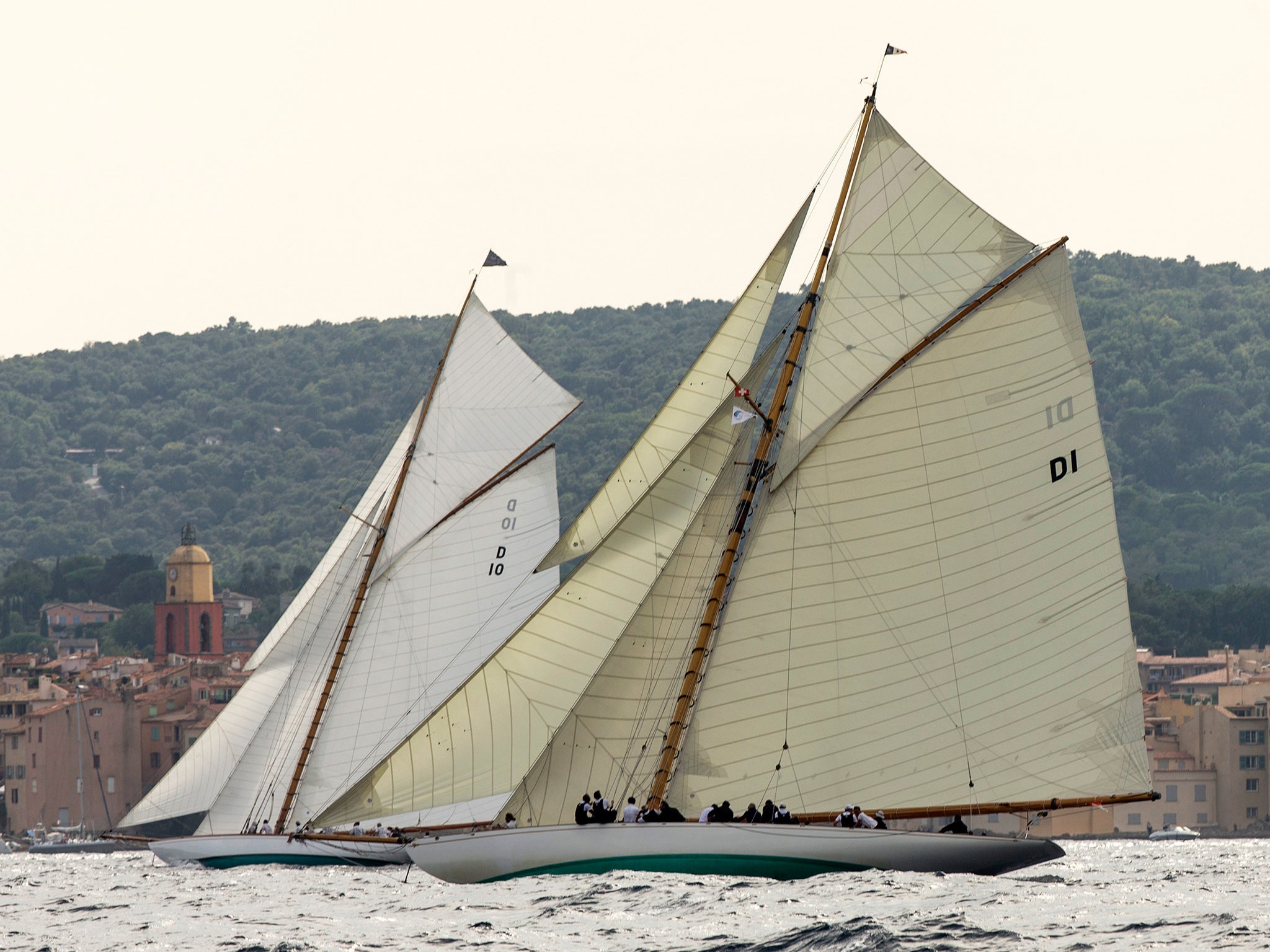Millionaires imprisoned in St. Tropez as the wind gods take charge
Elegance in stark contrast to frenetic world of America’s Cup

Your support helps us to tell the story
From reproductive rights to climate change to Big Tech, The Independent is on the ground when the story is developing. Whether it's investigating the financials of Elon Musk's pro-Trump PAC or producing our latest documentary, 'The A Word', which shines a light on the American women fighting for reproductive rights, we know how important it is to parse out the facts from the messaging.
At such a critical moment in US history, we need reporters on the ground. Your donation allows us to keep sending journalists to speak to both sides of the story.
The Independent is trusted by Americans across the entire political spectrum. And unlike many other quality news outlets, we choose not to lock Americans out of our reporting and analysis with paywalls. We believe quality journalism should be available to everyone, paid for by those who can afford it.
Your support makes all the difference.Millionaire or no millionaire, you take your place at the back of the queue for a spot on the start line of the amazing Voiles de St. Tropez regatta at the end of every September. Millionaire or no millionaire, you may not be able to secure a parking spot, a berth, in the small harbour of the oh-so-ritzy Côte d’Azur resort, made additionally famous by Brigitte Bardot, always thronged by the rich and the rubberneckers who gaze at them.
And, millionaire or no millionaire, when the wind blows hard, those multi-million pound yachts are pinned in harbour. As are the crews, flown in, housed, fed, and paid generous daily fees for their skills. The best from around the world are there, as are the enthusiastic amateur crews of 300 glittering steeds which include the stunningly elegant and the ridiculously extravagant. They have all been clicking their heels for two days this week as wind gusting up to gale force has whipped up a normally benign track.
The sea has been pushed into a bumpy obstacle course, making personal survival and the preservation of lovingly maintained yachts, some over 100 years old, take priority over out and out racing. As usual, especially in such conditions, there are also tensions, despite exclusion zones and marshalling, over the access for spectator boats and the concern for safety which can be a worry for the owners of the yachts. There may be a waiting list of 100, but a few are shying away.
As Thursday is always a rest day – not least because the organisers are contracted to give the restaurants a lunchtime crack at the wealthy competitors and their guests – that means three days of no racing for most, though conditions eased enough for a private encounter for a charity against hunger is being staged on Thursday between a 20-year old Wally, Genie, campaigned by Prince Charles of Bourbon-Two Sicilies, and the veteran Tuiga, under the flag of Prince Albert’s Yacht Club de Monaco. There were also other private line-ups.
As well-heeled owners scatter by helicopter to their private jets parked at Toulon-Hyères and the opportunity of a couple of days working back at the office, one man, Tom Whidden, took time to reflect on what has been 30 years of making the pilgrimage to St. Tropez. He is a winner, as tactician to Denis Conner, of the America’s Cup and, at this regatta, to Sir Lindsay Owen-Jones, former boss of L’Oréal and the man at the helm of a 100-foot Wally, Magic Carpet³.
It is 45 years since Whidden invested $5,000 in his own sail making company, which built to eight employees, but then rose to become president of North Sails, recently sold with 2,400 employees and a worldwide turnover, a substantial part of which is from clothing, of over $400m. a year.
Whidden is lukewarm about the current, completely restructured direction of the America’s Cup, which sees one of its warm-up World Series regattas in Bermuda in this month. Britain’s challenging Ben Ainslie Racing is definitely not lukewarm. He prefers the breadth of skills brought by bigger crews to racing monohulls which are now much faster. For sure, some very fit and agile people will be needed to take the 48-foot wing-powered catamarans which skim over the water on foils when the real America’s Cup races are staged in Bermuda in 2017. But the crew of seven may only need three expert sailors, although British Olympian Neal Macdonald points out that those musclemen grinders who manually power up the hydraulic control systems will need to be thinkers not automatons.
Whidden would also like to see some sort of central governing body take over more of the running of the Cup. “I think there would be both public and sailing community support for that,” he says. He is also disappointed that the Cup has been taken away from its home base in the United States, though the San Francisco-based Golden Gate Yacht Club remains the official holder of the Cup, and would like to see a return to teams that truly represent their own countries. “I think the United States can find seven good sailors,” he says.
Along the coast in Marseille, the GC32 foiling catamarans which will be used by the Extreme Sailing Series next year round off their 2015 European circuit while in Istanbul the penultimate Extreme regatta in the outgoing 40-foot non-foiling cats sees the Japanese SoftBank America’s Cup tactician, British Olympic bronze medallist Chris Draper, stepping in as guest skipper for GAC Pindar.
Join our commenting forum
Join thought-provoking conversations, follow other Independent readers and see their replies
Comments